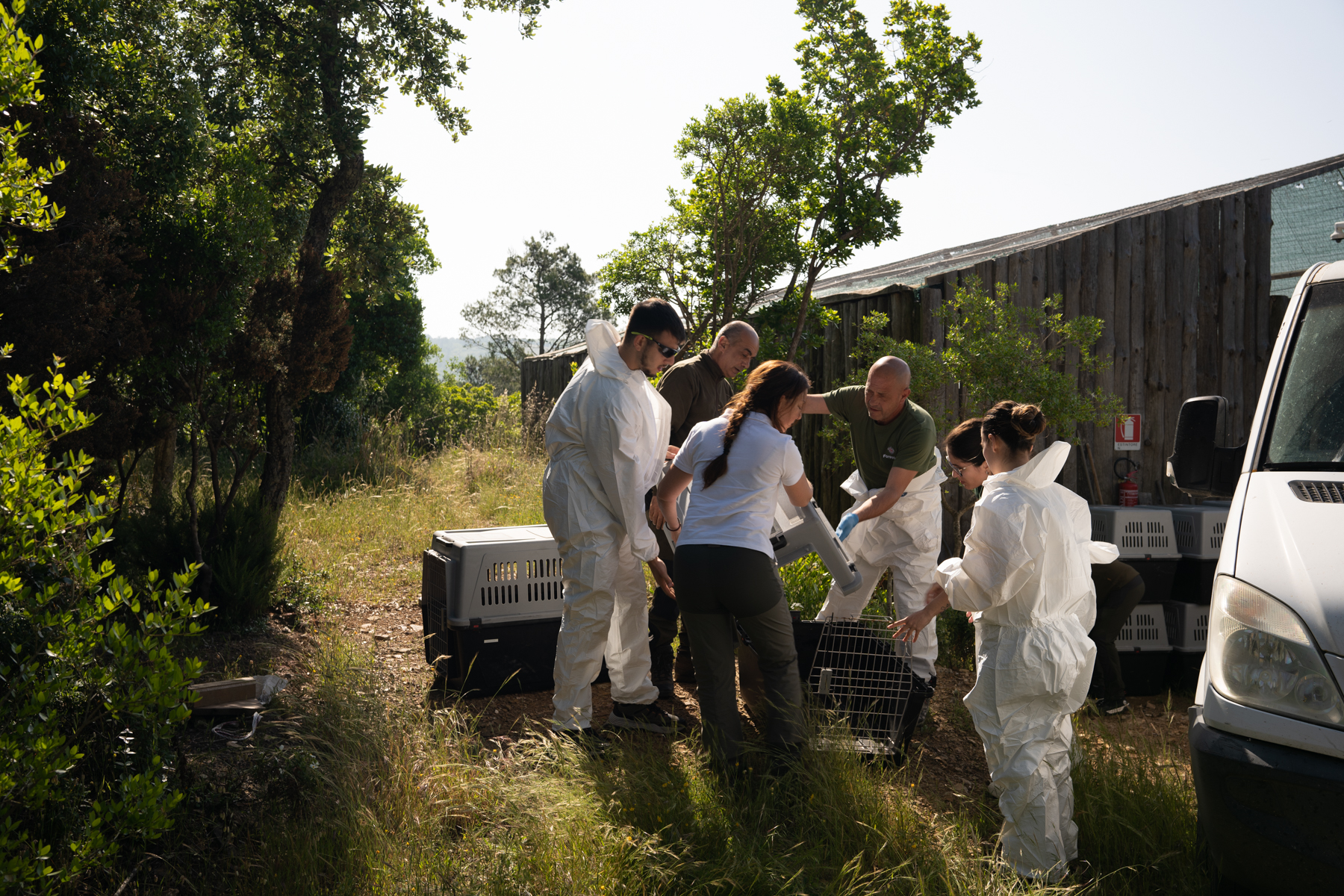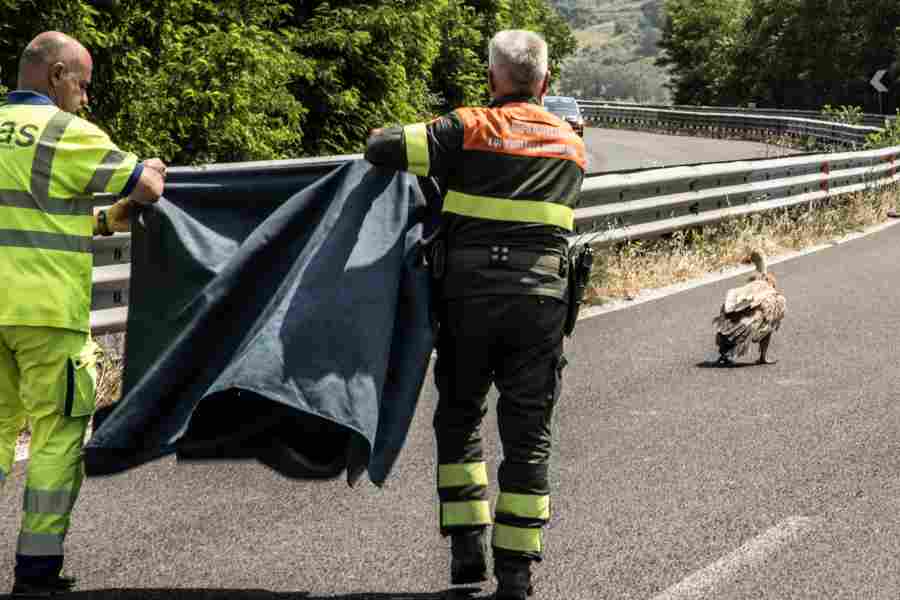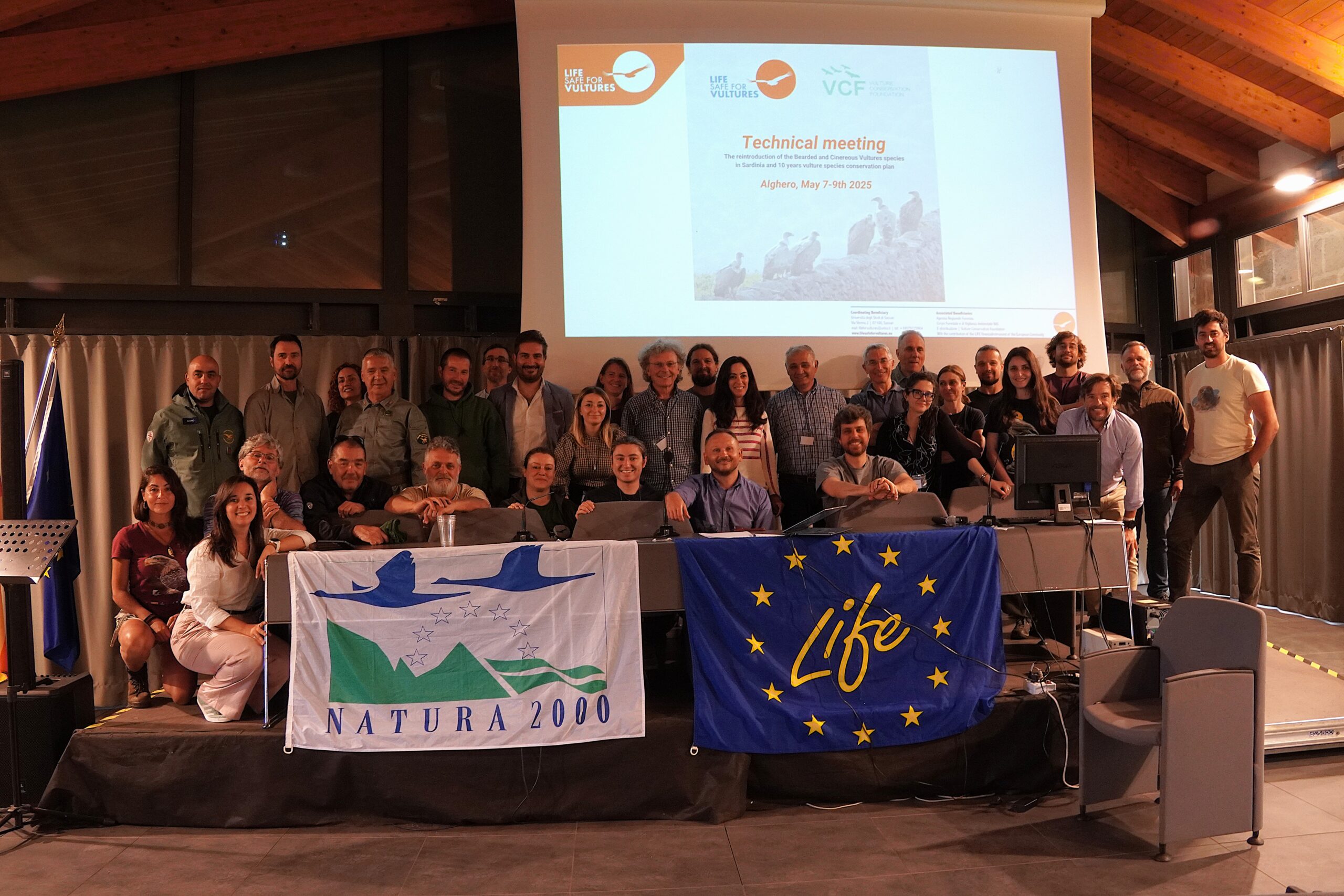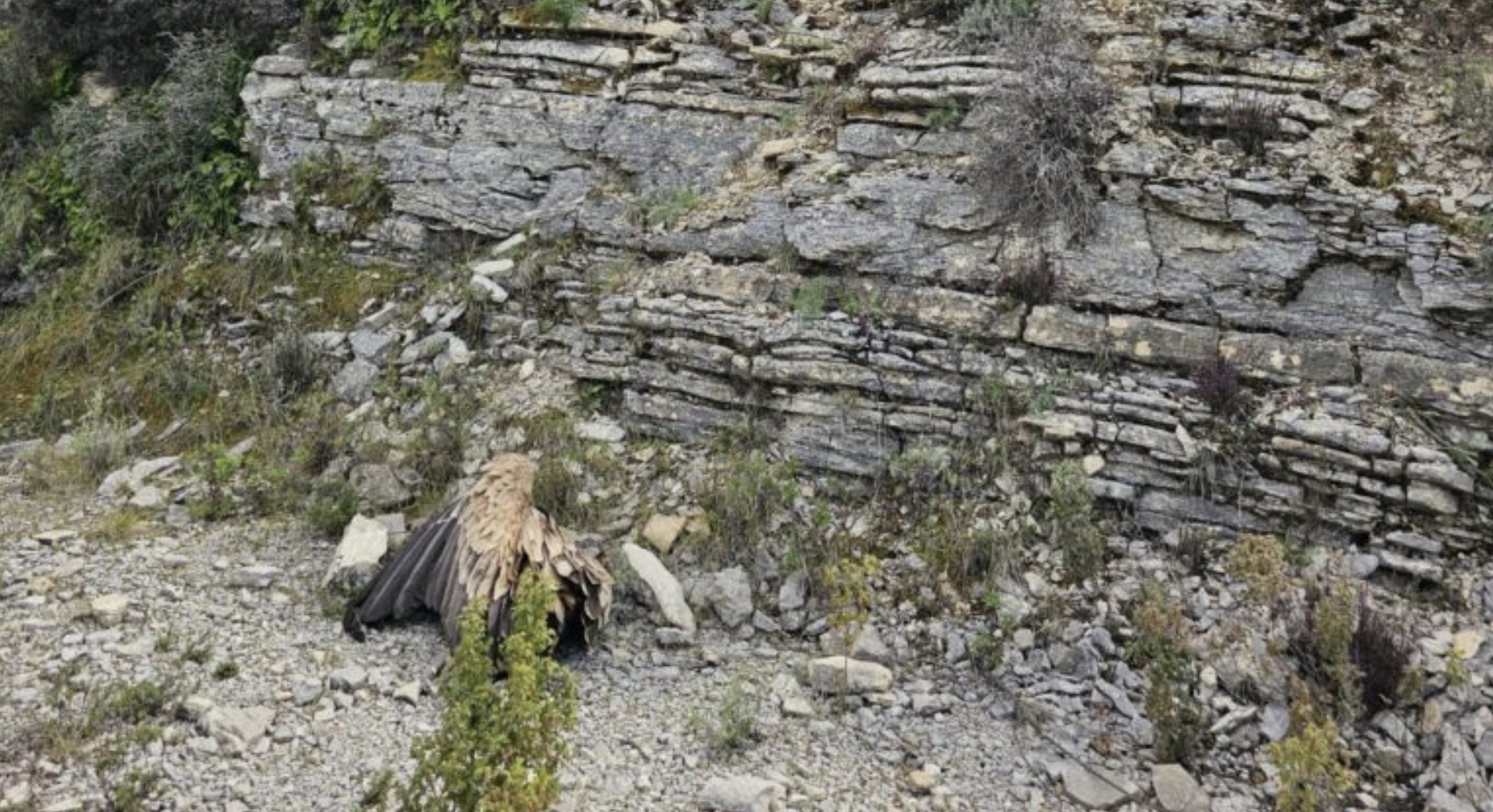
The current status of the 5 Eurasian griffon vulture populations in Italy has been compiled by Fulvio Genero (member of the VCF advisory board). Four populations are the result of reintroduction projects, and the Sardinian one is the last remnant partly-autochthonous Italian population. In 2014 we documented a further increase in the number of pairs, following a general positive trend, which, through the last 10 years led to a country-level growth of both population size (from 320-380 to 500-640 individuals), and of number of breeding pairs (from 73-88 to 136-138). The most marked increase has been recorded in Sicily and Sardinia; further pairs settled and nested in the surroundings of Pollino National Park (Calabria-Basilicata). In the Eastern Alps and in the Apennines (Abruzzi and Lazio) the populations are also gradually increasing, with a minimum sighted population of 139 vultures in Abruzzi-Lazio and a highly variable seasonal population size in the Eastern Alps (from 120 to 240 individuals), depending on the wide displacements of vultures from Croatia to the north during summer. GPS telemetry studies have been carried out in Abruzzi and Eastern Alps, and are scheduled for Pollino National Park. As a whole, considering the several reintroduction projects and the related management effort, the conservation status of this species is gradually improving. Threats are linked to poisoning events and wind farm development. In the eastern Alps a limiting factor is the availability of food and the presence of a single feeding point.
|
Geographical area |
Estimated pop. size |
N. Pairs |
Laying Pairs |
Chicks hatched |
Fledged chicks |
|
Sardinia |
120-125 |
33-35 |
29 |
22 |
22 |
|
Eastern Alps |
120-240 |
33 |
22 |
20 |
16 |
|
Central Italy (Abruzzi-Lazio) |
139 |
40 |
34 |
28 |
27 |
|
Nebrodi Natural Park, Sicily |
100 |
26 |
25 |
18 |
18 |
|
Pollino National Park – Calabria & Basilicata |
20-35 |
4 |
4 |
4 |
4 |
|
TOTAL |
500-640 |
136-138 |
114 |
92 |
87 |
In Sardinia an increase in reproductive success (0.79) and productivity (0.65) has been recorded in 2014, with the highest number of fledglings since 1971. A couple nested in the Alghero area and some historical nests have been occupied again in the vultures’ main range (Bosa municipality), likely because of decreased human disturbance. The occurrence of feral dogs and the related potential use of poisoned baits still remains a major threat. Two casualties have been reported in connection with power lines and wind farms.
On the Eastern Alps two more nesting areas have been detected in the valley of Tagliamento river; most of the nesting couples gather within two main nuclei and other additional 4-5 sites, which host 1-3 couples. In 2014, 3 cinereous vultures (Aegypius monachus) and 1 Egyptian vulture (Neophron percnopterus) have been observed at the feeding point. Satellite telemetry underlined the regular movements that immature vultures undertake during spring and summer across Croatia, Eastern Alps and the Tauern, in Austria. A webcam has been placed in the feeding point: http://www.riservacornino.it/la-tua-visita/webcam/
In central Italy (Abruzzi-Lazio) griffon vultures nest in 5 distinct sites in the Marsican range, and a long-term monitoring effort (since 1994) suggests that the breeding population is slowly increasing, even though the feeding point is less and less frequented. Food availability across the landscape seems to represent a favorable factor for the growth of colony number and size allowing a substantial independence from supplementary feeding. Movements toward surrounding areas, such as the Gran Sasso-Laga massif, are common from spring to autumn thanks to the abundance of livestock on high elevation and montane pastures. The supplementary feeding point in the Gran Sasso – Laga National Park has almost never been attended by the vultures (Gran Sasso-Laga National Park, unpublished data). A major concern is represented by forthcoming wind energy development sites which have been proposed in some of griffon vultures’ major activity areas. In 2014, 4 deaths have been recorded, linked to the impact with wind turbines or related structures. Four more vultures have been recovered wounded or in poor physical conditions, two of which at Narni (TR) and Certaldo (FI), far from vultures’ range. Three of them have been released after recovery.
In Sicily (Nebrodi Regional Park) a remarkable increase as happened for both the number of vultures and the nesting pairs. Five reproductive sites have been recorded, and among them one has been colonized for the first time by 10 nesting pairs. The vultures have enlarged the area they search for food and, at least in some periods, they do not attend the feeding point. The number of livestock found dead across pastures and fed upon by vultures is increasing. A webcam has been placed in a vulture’s nest and is accessible at http://www.parcodeinebrodi.it/?grifone=1
In the Pollino National Park two pairs reproduced in 2014. Interestingly, two other non-breeding pairs regularly attend an area at a distance of 50 km. In the Pollino area a further restocking is planned.
In the Italian Western Alps, during 2014, 122 griffon vulture observations have been collected by the Rete Osservatori Alpi Occidentali (Western Alps Observers Network). Almost all records are within the alpine district (98% of observations where at an elevation higher than 1.000 m a.s.l.) and only 2 in the plains and 2 in the hill district. The average number of sighted birds is 7, with a maximum of 35. Vultures are also seen at some temporary roosts at the French border. It is difficult to carry on accurate counts, but on the Italian side about 200 griffon vultures are estimated out of a total of ca. 1.500 individuals aestivating across the Western Alps. Individuals identified by means of wing tags or colored rings come from the Spanish or the French (Provence) populations. A synthesis of the sightings is available on the bulletin Infogipeto at: http://www.parcoalpimarittime.it/servizi-e-attivita/le-pubblicazioni-del-parco-alpi-marittime/infogipetodi
References
Sardinia: Mauro Aresu, Luigi Mozzo, Giuseppe Serra (Legambiente Sardegna), Alfonso Campus e Marco Muzzeddu (L’Altra Bosa)
Eastern Alps: Fulvio Genero (Riserva naturale del lago di Cornino); genero@tin.it
Central Italy (Abruzzo-Lazio): Marco Panella, Tiziana Altea, Mario Posillico and Giancarlo Opramolla – Corpo Forestale dello Stato (Forest Service), Ufficio Territoriale Biodiversità di Castel di Sangro, Via Sangro, 45 67031 Castel di Sangro (AQ); utb.casteldisa
ngro@corpoforestale.it
Nebrodi Regional Park, Sicily: Antonio Spinnato.
Pollino National Park, Basilicata and Calabria: Carmelo Pizzuti, Francesco Rotondaro, Alberto Sangiuliano, Pietro Serroni, Carmine Tedesco (Ente Parco Nazionale del Pollino), Agostino Armentano, Roberta Talone (ASP di Castrovillari), Antonio Palazzo, Leonardo Celestino (Comune di Civita).
Western Alps: Luca Giraudo (Parco Regionale delle Alpi Marittime)



